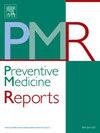Use of mobile technology for reporting the pharmacovigilance of vaccines in Panama
IF 2.4
3区 医学
Q2 PUBLIC, ENVIRONMENTAL & OCCUPATIONAL HEALTH
引用次数: 0
Abstract
Objective
Monitoring adverse reactions is essential to confirm vaccine safety profiles. Studies using electronic tools for data collection may reach a broader audience, improving data efficiency and integrity, reducing study costs and simplifying data collection compared with nonelectronic methods. This study aimed to validate electronic versus paper diaries for reporting postimmunization reactions in Panama.
Methods
An experimental design was conducted with three groups (children, pregnant women, and older adults). Groups were divided into one subgroup using paper diary and one using electronic diary. Diary assignments were subsequently reversed in children group, which parents completed. Symptoms and reporting frequency were collected in 2020 and 2021. Information reported in paper diaries was entered into an electronic case report form and reconciled. Users' adherence, differences between reported symptom frequency and users' acceptability of diaries were evaluated.
Results
A total of 180 participants were included: 79 children, 21 pregnant women, 80 older adults. Children group showed greater adherence to both diaries. No significant differences were found in response times in the electronic diary between groups. More symptoms were reported in the electronic diary. The experience of using diaries, no matter which one, was similar.
Conclusions
Results indicate young people adapt better to technological tools than older adults, suggesting tools should be adjusted according to the user's age. Furthermore, electronic applications for reporting postimmunization reactions offer suitable pharmacovigilance alternatives, providing real-time information, and requiring fewer staff, leading to improved health outcomes, patient compliance, and data for research and public health analysis, supporting global vaccine development.
在巴拿马使用移动技术报告疫苗的药物警戒情况
目的监测不良反应是确认疫苗安全性的必要条件。与非电子方法相比,使用电子工具进行数据收集的研究可以覆盖更广泛的受众,提高数据效率和完整性,降低研究成本并简化数据收集。本研究旨在验证在巴拿马报告刺激后反应的电子与纸质日记。方法采用三组实验设计(儿童、孕妇和老年人)。小组被分为使用纸质日记和使用电子日记两组。随后,儿童组的日记作业被逆转,由父母完成。在2020年和2021年收集症状和报告频率。在纸质日记中报告的信息被输入电子病例报告表格并进行核对。评估使用者的依从性、报告症状频率的差异和使用者对日记的接受程度。结果共纳入受试者180人,其中儿童79人,孕妇21人,老年人80人。儿童组更坚持这两种日记。电子日记的反应时间在两组之间没有显著差异。电子日记中报告了更多的症状。使用日记的体验,不管是哪一种,都是相似的。结论年轻人对科技工具的适应能力优于老年人,建议根据用户的年龄调整工具。此外,用于报告刺激后反应的电子应用程序提供了合适的药物警戒替代方案,提供实时信息,所需工作人员较少,从而改善了健康结果、患者依从性以及用于研究和公共卫生分析的数据,从而支持全球疫苗开发。
本文章由计算机程序翻译,如有差异,请以英文原文为准。
求助全文
约1分钟内获得全文
求助全文
来源期刊

Preventive Medicine Reports
Medicine-Public Health, Environmental and Occupational Health
CiteScore
3.90
自引率
0.00%
发文量
353
 求助内容:
求助内容: 应助结果提醒方式:
应助结果提醒方式:


